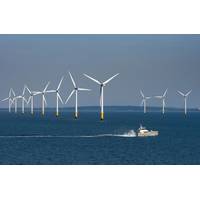SE Asia Oilfield Service Minnows Must Acquire or Expire
Suppliers of offshore oilfield services in Singapore, the seat of Southeast Asia's energy industry, are opening up to mergers and equity buy-ins as smaller players struggle to find the capital and scale to compete with the big boys.
Malaysia and Indonesia, the top oil and gas producing nations in the region, are planning to spend billions of dollars to unlock virgin reserves trapped in remote deepwater locations and boost extraction rates at existing but aging fields.
That promises more business for top offshore oilfield services firms like PACC Offshore Services Holdings Ltd and Swire Pacific Offshore, a unit of Hong Kong conglomerate Swire Pacific Ltd. But that does not mean more business for the smaller players, which have been clubbed by rising costs and keen competition in an overcrowded market.
People in the industry say the smaller players, which typically operate 20 to 30 offshore support vessels (OSVs), are not as cost-efficient as the big boys. And as expenses rise, they may have no choice but to seek outside capital or lease their equipment and ships to other operators.
"We have seen a fairly active market, and it will be a natural progression to see more M&As," said Joachim Skorge, the Asia head of investment banking at DNB Bank. "What we often see is when the market is improving, people looking for exit will be more open to sell."
Drawn by the promising Southeast Asia market, Australia's Mermaid Marine Australia Ltd bought Jaya Holdings Ltd for A$550 million ($510.48 million) in February. The purchase of Jaya, which owns a fleet of 27 OSVs and operates a shipyard in Batam, Indonesia, was the biggest acquisition in the region's OSV space in at least a decade.
Singapore-based Ezion Holdings Ltd, which dominates the region's market for liftboats, bought stakes in a couple of small companies including AusGroup Ltd and JK Tech Holdings Ltd . Liftboats are self-propelling rigs that support offshore energy work such as platform maintenance.
Ezion is also selling shares to companies under Hong Leong Group, controlled by Malaysia's third-richest man, Quek Leng Chan, to expand its fleet.
OSVs carry out different tasks to support offshore oil and gas exploration and production, from hauling rigs across oceans and laying pipelines on the seabed to transporting provisions to rig workers.
PLIGHT OF THE SMALL
The relatively low bar of entry and requirement or preference to use local service providers by oil and gas explorers have turned the region into one of the world's most fragmented OSV markets.
In Southeast Asia, the top five OSV operators account for 23 percent of the market, data from the U.S. research firm IHS shows. The rest of it is served by many much smaller players.
Their size pales in comparison with the likes of Singapore-based PACC Offshore Services, which operates 112 vessels. Bourbon SA, the world's top OSV player, commands a fleet of 458 vessels.
And in times of escalating costs, the smaller players are the ones feeling the pinch the most.
"Having the right assets is no longer enough," said James Pang, managing director at Pacific Radiance Ltd, which together with its joint ventures operates 120 vessels.
Pang said costs are rising due to new safety and environment regulations as well as increased oversight by oil companies.
Oil companies are demanding safer and more sophisticated equipment, as well as more inspections and audits, adding to capital spending and operating costs.
In addition, international conventions regulating anything from the amount of natural light in crew cabins to how ballast water ought to be treated means more money being spent, Pang added.
"You will see a lot of consolidation. We've already seen the beginning of it," said Alex Yeo, chief executive officer of OSV operator Swissco Holdings Ltd, which has recently taken over Scott and English Energy Pte Ltd to expand into the drilling rig owning and rental business.
Long-term Outlook
Most of the new oil and gas prospects in the region will come from offshore fields and in deepwater areas. The untapped resources are set to sustain demand for offshore services in the coming years - for those who are still around.
"If you look at this part of the world, you see that the rise in E&P spending is higher than the world at large," Geir Sjurseth, general manager of the DVB Group Merchant Bank (Asia) Ltd, told a recent industry conference.
He expects a 7 percent gain in Asia's E&P spending and 4 percent growth globally.
The region has rich natural gas resources. It had proven gas reserves of 253 trillion cubic feet in 2013, or under 4 percent of the world's total, data from the U.S. Energy Information Administration shows.
Gas production has more than doubled in the last two decades, and is expected to climb in the next 20 years, led by a 72-percent jump in Indonesia's output between 2011 to 2035, the International Energy Agency (IEA) said in a report.
($1 = 1.0774 Australian Dollars)
(By Rujun Shen; Editing by Ryan Woo)











